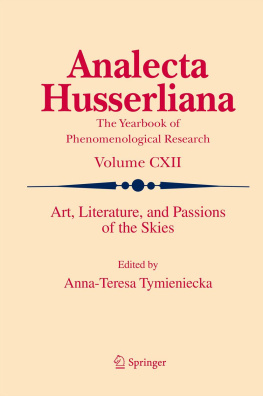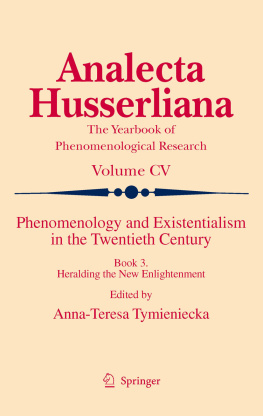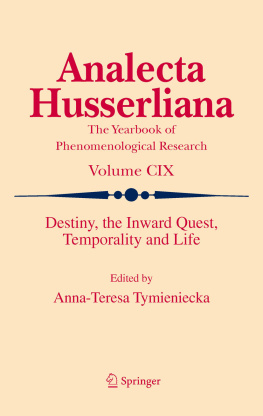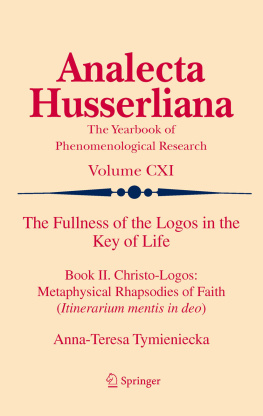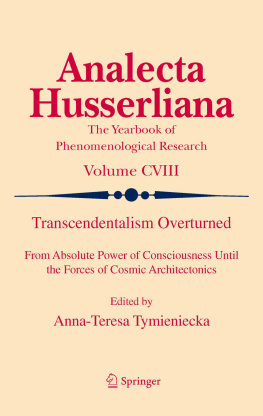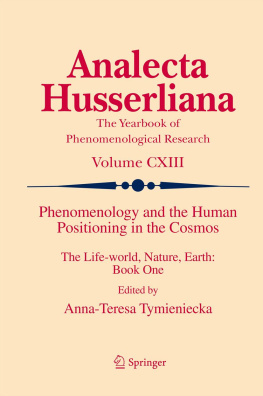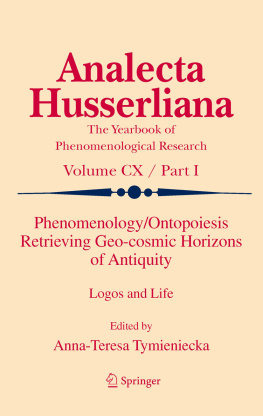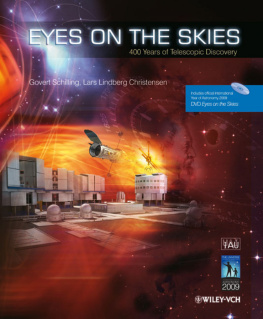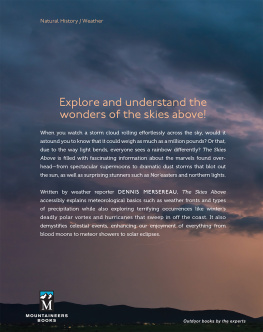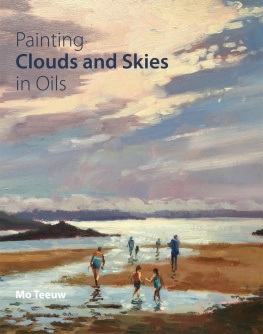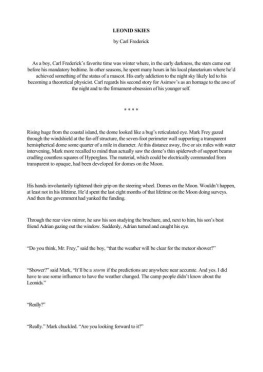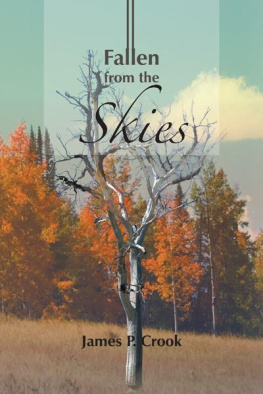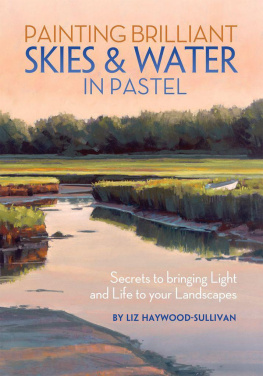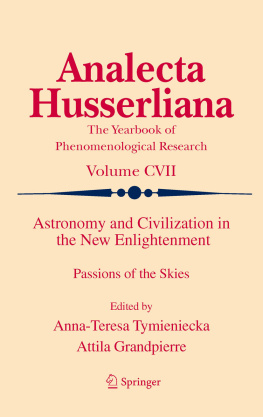Anna Teresa Tymieniecka (ed.) Analecta Husserliana The Yearbook of Phenomenological Research Art, Literature, and Passions of the Skies 2012 10.1007/978-94-007-4261-1_1 Springer Science+Business Media Dordrecht 2012
On the Cosmology of Literature: Parallel Universes and Meaning Beyond Information
Abstract
This paper discusses recent accounts of physicists leading theories of parallel and multiple universes, in light of the creative workings of fiction writers and storytellers. Acknowledging the great influence on literature and philosophy of scientific theories such as relativity and quantum mechanics, the paper examines string theorist Brian Greenes challenge to Platos parable of the cave. It also draws from James Gleicks The Information , especially the distinction Gleick makes between data and meaning. Arguing for the need to appreciate literatures contribution to our understanding of the universe of human experience, two short stories are summarized and interpreted. The Years of My Birth, Louise Erdrichs tale of twins separated at birth but strangely in communication with one another, might be perceived as a literary extension of the quantum theory of membrane universes, in which human universes are in close proximity but unable to communicate except through an ether of compassion and sacrifice. Alice Munros short story Axis evokes relationships abruptly ended in young adulthood, but recollected in a mature, laconic hindsight that alludes to alternate universes caused by societal restrictions, the sedimentation of personal experience, and the pain of paths not taken. These stories reveal that information about human experienceunlike information theory and the physics of black holesis not found on the surface. To respond fully to such stories, information must be interpreted and allowed to deepen in our imagination. Their readers are drawn beyond the level of written signification into a universe of moral implication whose dark energy and dark (invisible) matter is composed of various qualities of attention. Stories such as these forge their own cutting edge of discovery. They compel readers to distill information into insights, ideas, and deeper appreciation of the complexity of existence.
from what we cannot hold the stars are made.
W.S. Merwin
Storytelling steals from other forms of knowledge. At times the literary imagination shoots ahead of scientific calculations, but the humanities usually bow to the physical sciences as having a stronger grip on the nature of reality. Most notably, with Einsteins special and general theories of relativity, the entire field of philosophy was riven by the discovery that there can be no human observation that is not relative to the position of the observer, therefore no ultimate standpoint of truth. For the past century, the scientific exploration of relativity, quantum mechanics, and the urge to combine them into a theory of everything has fascinated even those who cannot tell a quark from an algorithm.
Science fiction has been stretching and distorting scientific knowledge for at least two centuries to illustrate the human condition. But what about those who explore realistic literature for what it can reveal about human experience on Planet Earth? For those who are most at home in this-worldly fiction and creative non-fiction, there is much to be learned from the current swirl of controversy over the mathematical calculations stemming from relativity, quantum mechanics, and string theory. There is also much that is left for storytellers and nonscientific thinkers to explore and ponder.
In his recent book, The Hidden Reality , physicist and string theorist Brian Greene recounts how Isaac Newtons tangible model of the physical world dealt with objects and the velocity of objects we can actually see. A degree of abstraction was added, Greene explains, when James Clerk Maxwell calibrated the electric and magnetic fields that our senses do not easily identify. In the twentieth century, science came to rely increasingly on inaccessible features, such as the union of space and time that gave us Einsteins special and general theories of relativity. Greene admits that, like everyone else, he feels the force of gravity, but even as a physicist he cannot feel his immersion in curved spacetime, though he is convinced that the special and general theories of relativity are correct.
Relativity theory, however, describes the effects of gravity on large bodies in space; whereas quantum mechanics applies to the movement of tiny subatomic particles of matter. So far these two major theories simply do not coincide mathematically, even though both have proven highly accurate. With quantum theory, Greene notes, the feeling of inaccessibility goes still further, because the central ingredient is the probability wave. Probability waves, he explains, give rise to predictions for where this or that particle is likely to be found, but the waves themselves slither outside the arena of everyday reality. Nevertheless, the existence of these waves has been strongly supported by observable data, so scientists and others are compelled to take seriously their invisible existence.
With this recent history of science in mind, Greene attempts to stand Plato on his head:
Plato likened our view of the world to that of an ancient forebear watching shadows meander across a dimly lit cave wall. He imagined our perceptions to be but a faint inkling of a far richer reality that flickers beyond reach. Two millennia later, it seems Platos cave may be more than a metaphor. [R]ealitynot its mere shadowmay take place on a distant boundary surface, while everything we witness in the three common spatial dimensions is a projection of that faraway unfolding. Reality, that is, may be akin to a hologram. Or, really, a holographic movie.
In the last century or so, Greene states, scientists have discovered that space, time, matter, and energy engage in a behavioral repertoire unlike anything any of us have ever directly witnessed. Their predictions have led us to the brink of the next upheaval in understanding: the possibility that our universe is not the only universe. The larger brains that our species evolved to survive on the savannah have eventually led us to tools far cleverer than spears and traps for hunting. Mathematics, physics, and other technological tools now probe behind the surface of visible reality, micro- and macroscopically.
Humanists will remind us that a still earlier tool led us to math and physics: language itselfwords, especially written words, writing itself. As James Gleichs recent book The Information observes, writing gave us the power to create artificial memory, to free us from the limits of individual minds having to remember what happened when. Gleich asserts, The power of this first artificial memory was incalculable: to restructure thought to engender history. The total vocabulary of any oral language, he notes, is a few 1,000 words, but English, the single language that has been written most widely, [has] a corpus that grows by the thousands of words a year. Its words do not exist only in the present as do those of spoken languages. Each word has a provenance and a history that melts into its present life. In the study of human experience, or phenomenology, through literature, we might add that language also creates a history of the imagination, in stories that get written and remembered.
To up Greenes ante, a phenomenologist could claim that literature has been creating alternative and parallel universes and describing different worlds for centuries. Students of physics and literature have noted that one great writer, Jorge Luis Borges, conceived of the Many Worlds approach to realityin his 1946 short story The Garden of Forking Pathsbefore a great physicist, Hugh Everett III, produced the math for it in 1954. But this is not a competition. Let us say that written language opened up an alternative universe to oral language, making possible communication and creativity that transcends ephemeral speech and the limits of individual memory.

